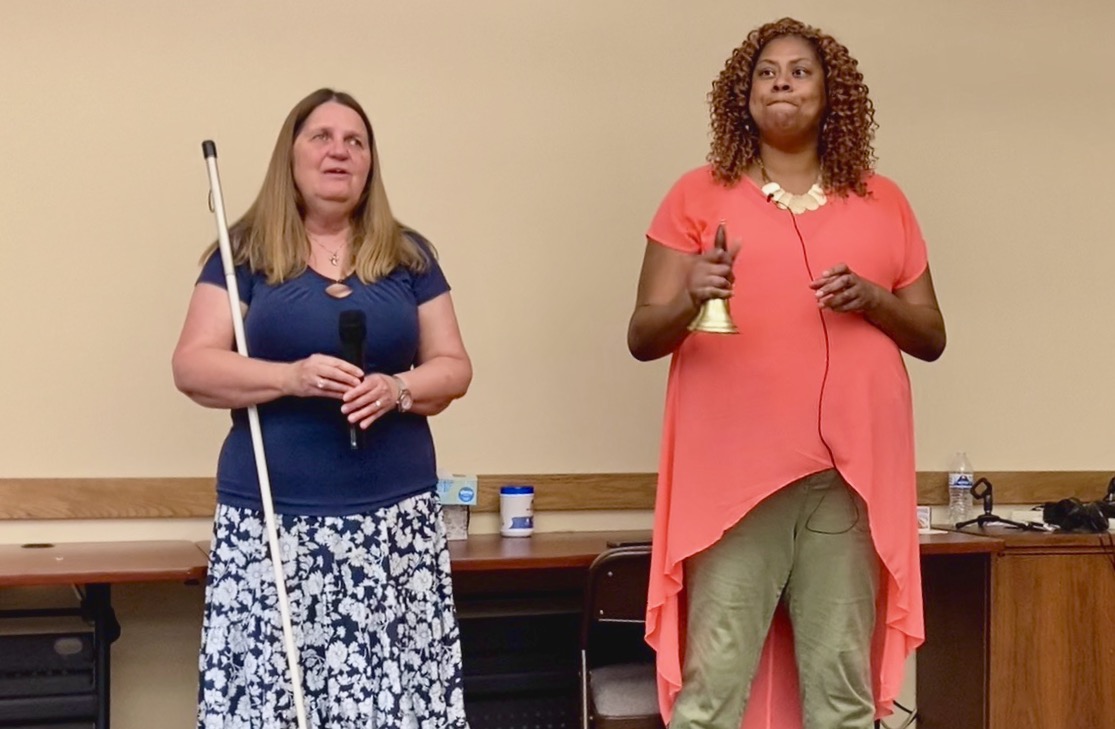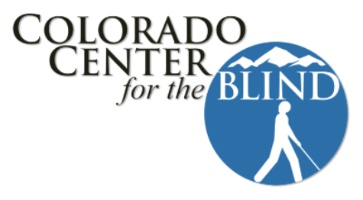
A while back, the Philosophy class met in the gym and student Jamila Lane led us through a “Privilege Walk.”
Jamila, from Atlanta, previously participated in Privilege Walks in both her undergraduate and graduate studies, but it was her first time leading one.
“Disability added a very interesting layer to it,” she said, “because everyone in this group is blind.”
Meaning that for questions that involved disability, almost everyone had to stand still or step back, and more than once as a result, leaving most of the staff and students clustered around the center line by the end.
“Usually, the separation is more distinct,” said Jamila, referring to the fact that the division is typically based on race and gender, with white men being overall more likely to benefit from steps ahead. Indeed, the four people farthest ahead at the end were white, three of them men, and staff and students of color were those farthest back of the starting line despite the overall concentration of participants around the starting line.
A Privilege Walk lines participants up at a center point, which in our case was the center line of the goal ball court. Then two sets of 15 questions are given. The first set are “step-ahead” questions. If you can answer “yes” to questions like “Your family expected you to go to college,” then you step ahead.
The second round consists of “step-back” questions, such as whether you were raised in a single-parent household or a family member had an alcohol or drug addiction.
In the discussion Jamila led after the questions, everyone got the chance to talk about how they felt about where they landed in relation to the center line and to one another. Staff and students expressed a greater understanding of both their own barriers or privileges, as well as those their fellow students and even staff have experienced.
The objective of conducting and participating in a Privilege Walk is, according to at least one source, to: “Raise awareness of various forms of privilege; understand the intersectionality of race, socioeconomic class, gender and other demographic variables that shape individuals; appreciate the diversity of individual backgrounds; and team-building
The exercise illuminated a hallmark of the diversity of our students and staff at the Colorado Center for the Blind, which is pretty much organic because blindness doesn’t respect race, gender, age, or class. Our students hail from both urban and rural communities. They come from diverse parts of the country – Colorado of course, but currently also from Arizona, California, Georgia, Tennessee, Missouri, Montana, New Hampshire, Kansas, and Massachusetts, and range in age from 18 to 71. They come together as a group in their shared bond of blindness and the common desire to learn the skills that now-successful alumni learned before them. Leaders like jamila play a crucial role in creating and sustaining a positive social group among blind people from such diverse backgrounds and experiences.
Jamila earned her Bachelor’s Degree from the University of Washington and her Master’s Degree in Rehabilitation Counseling from Georgia State. Her leadership shone as a student, serving as president of the Student Association for a three-month term marked by extraordinary student engagement and lots of fun activities. Known as “Mama J” to many, her loving and supportive leadership brought students together at the center and outside of class. She regularly fed the throng with her outstanding cooking and mentored many.
Jamila graduated from the center on Friday, August 26. She plans to enter the Master’s program at Louisiana Tech later this summer to become a Rehabilitation Teacher of the Blind.

